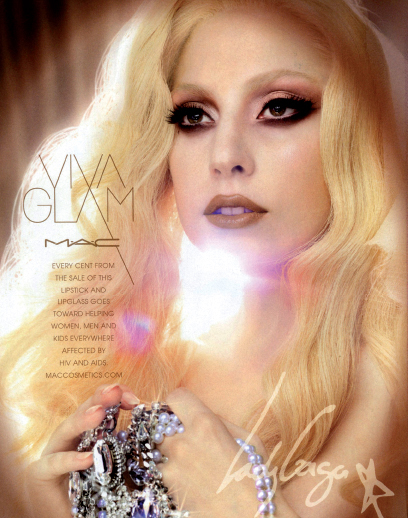Using Conventional Persuasive Strategies
Printed Page 336

Celebrities can be used to endorse brands; they can also use endorsements to promote their own brands. Here Lady Gaga promotes MAC cosmetics, as well as a pet social cause.
Advertisers have long used a number of conventional persuasive strategies.
- Famous-person testimonial: A product is endorsed by a well-known person. For example, Serena Williams has become a leading sports spokesperson, having appeared in ads for companies including Nike, Kraft Foods, and Procter & Gamble.
- Plain-folks pitch: A product is associated with simplicity. For instance, General Electric (“Imagination at work”) and Microsoft (“Your potential. Our passion.”) have used straightforward slogans stressing how new technologies fit into the lives of ordinary people.
- Snob appeal: An ad attempts to persuade consumers that using a product will maintain or elevate their social status. Advertisers selling jewelry, perfume, clothing, and luxury automobiles often use snob appeal.
- Bandwagon effect: The ad claims that “everyone” is using a particular product. Brands that refer to themselves as “America’s favorite” or “the best-selling” imply that consumers will be “left behind” if they ignore these products.
- Hidden-fear appeal: A campaign plays on consumers’ sense of insecurity. Deodorant, mouthwash, and shampoo ads often tap into people’s fears of having embarrassing personal hygiene problems if they don’t use the suggested product.
- Irritation advertising: An ad creates product-name recognition by being annoying or obnoxious. (You may have seen one of these on TV, in the form of a local car salesman loudly touting the “UNBELIEVABLE BARGAINS!” available at his dealership.)